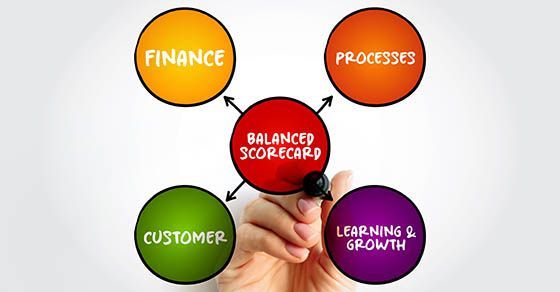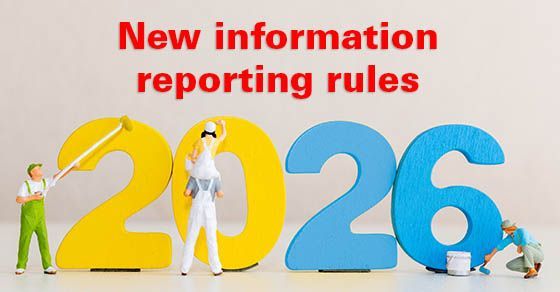Healthy savings: How tax-smart HSAs can benefit your small business and employees
December 2, 2024
As a small business owner, managing health care costs for yourself and your employees can be challenging. One effective tool to consider adding is a Health Savings Account (HSA). HSAs offer a range of benefits that can help you save on health care expenses while providing valuable tax advantages. You may already have an HSA. It’s a good time to review how these accounts work because the IRS has announced the relevant inflation-adjusted amounts for 2025.
HSA basics
For eligible individuals, HSAs offer a tax-advantaged way to set aside funds (or have their employers do so) to meet future medical needs. Employees can’t be enrolled in Medicare or claimed on someone else’s tax return.
Here are the key tax benefits:
• Contributions that participants make to an HSA are deductible, within limits.
• Contributions that employers make aren’t taxed to participants.
• Earnings on the funds within an HSA aren’t taxed so the money can accumulate tax-free year after year.
• HSA distributions to cover qualified medical expenses aren’t taxed.
• Employers don’t have to pay payroll taxes on HSA contributions made by employees through payroll deductions.
Key 2024 and 2025 amounts
To be eligible for an HSA, an individual must be covered by a “high-deductible health plan.” For 2024, a high-deductible health plan has an annual deductible of at least $1,600 for self-only coverage or at least $3,200 for family coverage. For 2025, these amounts are $1,650 and $3,300, respectively.
For self-only coverage, the 2024 limit on deductible contributions is $4,150. For family coverage, the 2024 limit on deductible contributions is $8,300. For 2025, these amounts are increasing to $4,300 and $8,550, respectively. Additionally, for 2024, annual out-of-pocket expenses for covered benefits can’t exceed $8,050 for self-only coverage or $16,100 for family coverage. For 2025, these amounts are increasing to $8,300 and $16,600.
An individual (and the individual’s covered spouse, as well) who has reached age 55 before the close of the tax year (and is an eligible HSA contributor) may make additional “catch-up” contributions for 2024 and 2025 of up to $1,000.
Making contributions for your employees
If an employer contributes to the HSA of an eligible individual, the employer’s contribution is treated as employer-provided coverage for medical expenses under an accident or health plan. It is excludable from an employee’s gross income up to the deduction limitation. There’s no “use-it-or-lose-it” provision, so funds can build for years. An employer that decides to make contributions on its employees’ behalf must generally make similar contributions to the HSAs of all comparable participating employees for that calendar year. If the employer doesn’t make similar contributions, the employer is subject to a 35% tax on the aggregate amount contributed by the employer to HSAs for that period.
Using funds to pay medical expenses
Your employees can take HSA distributions to pay for qualified medical expenses. This generally means expenses that would qualify for the medical expense itemized deduction. They include costs for doctors’ visits, prescriptions, chiropractic care and premiums for long-term care insurance.
The withdrawal is taxable if funds are withdrawn from the HSA for any other reason. Additionally, an extra 20% tax will apply to the withdrawal unless it’s made after age 65 or in the case of death or disability.
As you can see, HSAs offer a flexible option for providing health care coverage, but the rules are somewhat complex. Contact us with questions or if you’d like to discuss offering this benefit to your employees.
© 2024

Did you know there’s a tax-advantaged way to save for the expenses of a person with a disability that’s similar to saving for college expenses with a Section 529 plan? Achieving a Better Life Experience (ABLE) accounts can help fund qualified disability expenses for an eligible beneficiary. The SECURE 2.0 Act, signed into law in 2022, made changes that will allow more people to be eligible for ABLE accounts beginning in 2026. The One Big Beautiful Bill Act (OBBBA), signed into law July 4, 2025, has made certain enhancements to them permanent. The benefits ABLE accounts can be created by eligible individuals to support themselves, by family members to support their dependents, or by guardians for the benefit of the individuals for whom they’re responsible. Anyone can contribute to an ABLE account. The OBBBA made permanent the ability of the designated beneficiary to claim the saver’s credit for contributions he or she makes to his or her ABLE account. The maximum saver’s credit for an individual for 2025 and 2026 is $1,000. While contributions aren’t tax-deductible, the funds in the account are invested and grow tax-deferred. Distributions used to pay eligible expenses are tax-free. (If distributions are used for nonqualified expenses, the portion of the distribution that represents earnings on the account is subject to income tax — plus a 10% penalty.) Having an ABLE account generally won’t affect the beneficiary’s eligibility for the government benefits to which he or she is entitled. ABLE accounts have no impact on Social Security Disability Insurance (SSDI) payments or Medicaid eligibility. However, ABLE account balances in excess of $100,000 are counted toward the Supplemental Security Income (SSI) program’s $2,000 individual resource limit. Therefore, an individual’s SSI benefits are suspended, but not terminated, when his or her ABLE account balance exceeds $102,000 (assuming the individual has no other assets). In addition, distributions from an ABLE account to pay housing expenses count toward the SSI income limit. Expanded eligibility Eligible individuals must be blind or disabled. For 2025 and prior years, the individual must have become so before turning age 26. But under SECURE 2.0, this age increases to 46 beginning on January 1, 2026. To be eligible, individuals generally must be entitled to benefits under the SSI or SSDI programs. Alternatively, individuals can become eligible if a disability certificate is filed with the IRS. Qualified expenses Distributions from an ABLE account are tax-free if used to pay for expenses that maintain or improve the beneficiary’s health, independence or quality of life. These expenses include: Education, Housing, Transportation, Health and wellness, Assistive technology, and Personal support services. Employment support expenses also qualify. Setting up an account Like 529 plans, ABLE accounts are established under state programs, and there are many choices. An account may be opened under the program of a state other than the one where the individual resides (as long as the state allows out-of-state participants). The funds in an account can be invested in a variety of options, and the account’s investment directions can be changed up to twice a year. Be aware that an eligible individual can have only one ABLE account. Also, there’s an annual contribution limit of $19,000 for 2025 and $20,000 for 2026. The OBBBA made permanent the ability to roll over 529 plan funds to an ABLE account without penalty, as long as the ABLE account is owned by the beneficiary of the 529 plan or a member of the beneficiary’s family. Such rolled-over amounts count toward the annual contribution limit. However, if the beneficiary works, he or she can also contribute part, or all, of his or her income to the account. (This additional contribution is limited to the poverty-line amount for a one-person household.) A new opportunity If you or someone in your family became disabled or blind after turning 26 but before age 46, the expansion of ABLE account eligibility in 2026 provides a new opportunity for tax-advantaged savings. To learn more about the tax benefits and other financial considerations, contact us. © 2025

Strategic planning can feel overwhelming for business owners juggling sales goals, cash flow challenges, staffing needs and day-to-day operational issues. Although you may rely heavily on financial reports to make key decisions, numbers alone don’t always tell the full story. Introduced in the early 1990s, the balanced scorecard approach still offers a practical framework for translating vision into action that’s worth revisiting. 4 critical areas The balanced scorecard approach was unveiled in a 1992 Harvard Business Review article entitled “The Balanced Scorecard — Measures That Drive Performance.” Essentially, it segments strategic planning into four critical areas: 1. Customers. Every business owner understands the importance of customer satisfaction. However, to truly understand and meet their needs, you must identify the right metrics. Just as critical is determining which customer segments your company is best equipped to serve. Under the balanced scorecard approach, you consider how your business can attract, retain and deepen relationships with customers that are most likely to support sustainable profitability. 2. Finance. Many companies rely on financial results as the sole indicator of overall stability and success. However, the results that show up in, say, your financial statements are typically lagging indicators; they reflect past events rather than future performance. To be clear, you should continue generating accurate financial statements. But the balanced scorecard approach encourages businesses to track metrics, such as sales growth and workforce efficiency, that reveal more timely financial outcomes. 3. Processes. To operate more productively and efficiently, business owners and their leadership teams must identify and solve process-related problems. Simply paying closer attention to a shortcoming isn’t enough. For example, measuring productivity won’t automatically increase it. The balanced scorecard approach motivates you to analyze the internal components of your operations — from design and production to delivery, billing and collections — and implement process improvements that support strategic objectives. 4. Learning and professional growth. Continuing education often calls for more time and effort than companies are willing or able to devote. Learning must go beyond training new hires to include, for instance, mentoring and knowledge sharing through performance management programs. For many businesses, success largely depends on the development and preservation of intellectual capital. The balanced scorecard approach focuses strategic planning on better retaining institutional knowledge, encouraging ongoing learning and preparing employees for future roles. Best practices Following the balanced scorecard approach involves clearly defining your strategic objectives in each of the four areas, choosing a few metrics to track and expressing the results on a “scorecard.” Many leadership teams use a simple table or spreadsheet for their scorecards, while others use digital dashboards that update key metrics in real time. Remember, too many measures can dilute focus and obscure what truly drives business performance. The most effective scorecards concentrate on a small set of meaningful indicators aligned directly with the company’s strategic objectives in each area. For instance, suppose a growing manufacturing company wants to improve profitability while maintaining quality and on-time delivery. To support this strategic objective, leadership develops a balanced scorecard to track: On-time delivery and customer complaints (customers), Operating margin and cash flow (finance), Production cycle time and scrap rates (processes), and Safety incidents and workforce training hours (learning and professional growth). Another best practice is to ensure balance among leading and lagging indicators. As mentioned, financial results show what has already happened. In contrast, customer surveys, employee engagement data and operational benchmarks can highlight emerging opportunities or risks before they appear in financial statements. Reviewing these measures together can help you and your leadership team identify connections across the business rather than evaluating each area in isolation. Finally, consistency and accountability are essential. Review your scorecard regularly — quarterly at a minimum — and integrate it into leadership meetings and performance discussions. Assign clear ownership to each metric so responsibilities are clear and progress can be monitored. As your business evolves, revisit your scorecard to ensure it continues to reflect your strategy and priorities. An intriguing concept When exercised diligently and properly, the balanced scorecard approach can become a vibrant business practice that supports better decisions and keeps strategic objectives front and center. But it’s not for every company. If you’re intrigued by the concept, explore it further before committing. And no matter what strategic planning approach you choose, we’re here to help organize your financials and support measured, long-term growth. © 2025

S corporation structure provides most of the tax benefits of a partnership plus the liability protection of a corporation. But because of the strict requirements that apply to these entities, preserving S corporation status requires due diligence. Reap the benefits Like a traditional C corporation, an S corporation shields its shareholders from personal liability for the corporation’s debts. Like a partnership, an S corporation is a “pass-through” entity, which means that all of its profits and losses are passed through to the owners, who report their allocable shares on their personal income tax returns. This allows S corporations to avoid the double taxation of C corporations, whose income is taxed at the corporate level and again when distributed to shareholders. To qualify as an S corporation, all of a corporation’s shareholders must file an election with the IRS on Form 2553, Election by a Small Business Corporation. In addition, the corporation must: Be a domestic (U.S.) corporation, Have no more than 100 shareholders (certain family members are treated as a single shareholder for this purpose), Have only “allowable” shareholders (see below), Have only one class of stock (generally, that means that all stock confers identical rights to distributions and liquidation proceeds; differences in voting rights are permissible), and Not be an “ineligible” corporation, such as an insurance company, a domestic international sales corporation (DISC) or a certain type of financial institution. Allowable shareholders include individuals, estates and certain trusts, such as a qualified Subchapter S trust (QSST) and an electing small business trust (ESBT). Partnerships, corporations and nonresident aliens are ineligible. Preserve and protect To avoid inadvertent termination of S corporation status, among other things, you should: Continually monitor the number and type of shareholders, scrutinize the terms of any trusts that hold shares, and ensure that QSSTs or ESBTs have filed timely elections, Include provisions in buy-sell agreements that prevent transfers to ineligible shareholders, Make sure that if shares are transferred to an ESBT, all potential current beneficiaries are eligible shareholders, and Be aware that if shares are held by grantor or testamentary trusts, these types of trusts are eligible shareholders for only two years after the grantor dies or the trust receives the stock. So track the two-year eligibility period and make sure trusts convert into QSSTs or ESBTs or transfer their shares to an eligible shareholder before the period expires. Also, avoid actions that may be deemed to create a second class of stock, such as making disproportionate distributions. Stay focused Avoiding inadvertent termination of your company’s S corporation status is critical. Termination generally will result in the loss of substantial tax benefits. You may be able to get the IRS to retroactively restore your S status, but it can be an expensive, time-consuming process. So stay focused on maintaining compliance with all S corporation requirements. Contact us if you have questions. © 2025

The One Big Beautiful Bill Act (OBBBA) creates a new type of tax-advantaged account for eligible children. Section 530A accounts, also known as “Trump accounts,” can be established for children under age 18 who have a Social Security Number (SSN). Contributions to properly established accounts can begin on July 4, 2026. The IRS has released guidance that sheds more light on the accounts and a temporary pilot program that will contribute $1,000 tax-free for certain children. Here’s what you need to know. A different kind of IRA — initially A Trump account is established for the exclusive benefit of an eligible child, who’s the account owner. While the account is essentially a type of IRA, it’s subject to special rules that don’t apply to other IRAs. Most of these rules are in effect only during the period that ends before January 1 of the calendar year in which the child reaches age 18 — what’s referred to as the “growth period.” During the growth period: The account funds can be invested only in eligible investments — generally, mutual funds or exchange-traded funds (ETFs) that track an index of primarily U.S. companies, such as the Standard and Poor’s 500, and meet other criteria, The account has a lower contribution limit, generally $5,000 per year (adjusted for inflation after 2027), The account generally can’t make distributions (including hardship distributions), and Individuals can’t claim a tax deduction for their contributions. After the child turns 18, traditional IRA rules kick in, including those regarding contributions, distributions (as well as the 10% early withdrawal penalty), required minimum distributions (RMDs), taxation and Roth IRA conversions. Account election Unlike regular IRAs, Trump accounts must be created initially by the U.S. Treasury Secretary. To have an account established for your child, you must make an election, and the child must not have reached age 18 before the close of the calendar year when the election is made. The child also must have an SSN before the election is made. According to the IRS guidance, the election can be made on the forthcoming Form 4547, Trump Account Election(s), or through an online tool that isn’t yet available. You can file the form with your 2025 tax return. An account can be established at the same time you elect to receive a pilot program contribution (see below) or any time before January 1 of the year the child turns 18. Only one account can be opened per child. After the election is made, the Treasury Department will send you the necessary information to activate the account. The IRS says this information will be available in May 2026. Pilot program participation A one-time $1,000 government-provided contribution is available for children born after December 31, 2024, and before January 1, 2029, who are U.S. citizens with SSNs. The pilot program election can be made on Form 4547 or through the online tool. The Treasury Department will contribute to accounts eligible for the pilot program as soon as practicable after the election is made. Note that no contributions will be made before July 4, 2026. Contributions to the account Trump accounts can receive several types of contributions during the growth period besides contributions from parents, other loved ones or the children themselves. For example, an account can accept a “qualified general contribution” funded by states and political subdivisions, the federal government, Indian tribal governments, or certain nonprofits. These contributions, which will funnel through the Treasury Department, can be made only to “qualified classes,” such as those residing in certain areas and born in specific years. Michael and Susan Dell’s recently announced donation totaling $6.25 billion is an example of this type of contribution. Employers can contribute up to $2,500 per year (adjusted for inflation after 2027) to the accounts of employees or their dependents, with contributions generally excluded from the employee’s taxable income. The limit applies on a per-employee basis. Trump accounts can also accept qualified rollover contributions. Pilot program contributions, qualified general contributions and qualified rollover contributions don’t count toward the annual contribution limit. However, employer contributions do count toward the limit. Notably, contributions must be made within the calendar year to count toward that year’s limit — the contribution deadline doesn’t extend to April 15 of the following year as it does for traditional and Roth IRAs. Education savings alternatives Trump accounts might not be the best option when it comes to building savings for your child’s education. Both 529 plans and Coverdell Education Savings Accounts (ESAs) also allow tax-deferred growth, but withdrawals for qualified education expenses are tax-free. On the other hand, Trump account distributions are taxed as ordinary income to the extent that they aren’t attributable to after-tax contributions. There are other 529 plan advantages: Contributions may qualify for state tax deductions. And they aren’t subject to an annual limit, provided they don’t exceed the amount needed to cover the beneficiary’s qualified expenses. (Note that gift tax rules might apply, depending on the contribution amount.) Moreover, up to $35,000 of funds left in a 529 plan account held for at least 15 years in one beneficiary’s name can be rolled over into the beneficiary’s Roth IRA without incurring the normal 10% penalty for nonqualified withdrawals or resulting in taxable income. Roth IRAs don’t have RMDs, and withdrawals are tax-free. Certain restrictions on 529 plan rollovers apply, but this rollover option could be a significant advantage over Trump accounts, which eventually become traditional IRAs. Investment options for 529 plans are limited to those permitted by the plan administrator, typically mutual funds and ETFs. But they may offer greater choice than Trump accounts. ESAs allow a wider range of investments, typically everything a broker offers. However, the maximum contribution to an ESA is limited to $2,000 per beneficiary per year, and contributors are subject to income-based contribution limits. Stay tuned The IRS expects to issue additional guidance on Trump accounts. We’ll keep you up to date on important developments in this and other OBBBA-related areas. © 2025

Owning assets with your adult child as “joint tenants with right of survivorship” may seem like a simple way to streamline your estate plan. However, doing so can carry important legal, tax and practical implications that deserve careful consideration. Positives and negatives There are upsides to owning an asset — such as real estate, a bank or brokerage account, or a car — jointly with your child. For example, when you die, the asset will automatically pass to your child without the need for more sophisticated estate planning tools and without going through probate. The downsides, however, can be considerable. When you add a child as a joint owner of an asset, he or she typically gains immediate ownership rights to the asset — not just a future interest. This means it may be subject to the child’s creditors, a divorce settlement or lawsuits. These external risks will be beyond your control and can jeopardize assets you’d planned to use to support yourself during retirement. There can also be significant tax considerations. Adding a child as a joint owner may be treated as a taxable gift, depending on the asset and how ownership is structured. In addition, joint ownership can eliminate the step-up in cost basis that beneficiaries often receive at death, potentially increasing capital gains taxes when the asset is later sold. What appears to be a probate avoidance strategy can, in some cases, create a larger tax bill for the next generation. Finally, joint ownership can override the intentions expressed in your will or trust. Assets held jointly with rights of survivorship generally pass directly to the surviving owner, regardless of what the estate plan says. This can unintentionally disinherit other children or beneficiaries and lead to family conflict. For many families, alternatives such as powers of attorney, beneficiary designations or revocable trusts provide greater flexibility and protection. Right move for you? Jointly owning assets with your child is a decision that you should make with care, not solely for convenience. While it may simplify access or avoid probate in some cases, it can also expose assets to unnecessary risk, create unintended tax consequences and undermine the goals of your otherwise well-structured estate plan. Together with your estate planning attorney, we can help evaluate how joint asset ownership might fit into your broader estate plan and ensure that your assets are protected, family harmony is preserved and your wishes are carried out as intended. © 2025

For today’s small to midsize businesses, a strong sales function doesn’t start with scripts, software or even the most talented representatives. It begins with clarity — everyone doing the selling must be on the same page. One way to achieve such clarity is to formally define your company’s unique selling proposition (USP). This is typically a clear, concise statement that explains the distinct value of your products or services and why customers should choose your company over competitors. A well-crafted USP unites your sales team around a consistent message they can confidently deliver. Narrowing it down If you’ve never written a USP before, identifying one may require careful thought — and periodic revisiting as your company or markets evolve. To get started, hold brainstorming sessions that include employees from every level of the organization. Ask participants to answer questions such as: What makes our offerings distinctive? What drives our business’s growth? What’s hardest for our competitors to copy? Why should customers buy from us instead of them? Indeed, understanding your competitors is essential. You can’t differentiate your business unless you know what competitors are selling, how they’re selling it, and how their marketing and customer service functions support sales. A certain amount of “competitive intelligence gathering” may be in order. This doesn’t necessarily mean conducting elaborate or costly research. And it certainly shouldn’t involve any unethical activity. Rather, competitive intelligence gathering can be as simple as: Reviewing competitors’ websites, Monitoring their social media accounts, Signing up for email campaigns, and Speaking with customers familiar with multiple providers. Also consider asking your sales team to document what prospects say about competing options. Over time, these insights may reveal meaningful differences between your business and the alternatives customers are considering. Making your mantra Your USP should be a powerful proclamation that customers immediately understand. A well-known example is FedEx’s former slogan, “When it absolutely, positively has to be there overnight.” Although no longer in use, it remains clear and memorable. However, your USP must be more than words. Once established, it should serve as a mantra for your sales team. Reps should use the USP — or a tailored version — to explain why your products or services are the right choice. Just be careful not to overuse it in marketing materials; express it in various ways to maintain impact. Going beyond sales A strong USP can influence pricing power and financial performance. When customers clearly understand what sets you apart, they’re often more willing to pay for that added value. To ensure your USP resonates, validate it with customer input — through surveys, feedback from sales calls or message testing. Also, use your USP to inform decisions across the company. You can strengthen operations, customer service, marketing and even hiring practices when these functions align with your essential message. Finally, measure your USP’s impact over time to determine whether your messaging is working or needs refinement. Track indicators, such as conversion rates, sales cycle length, customer retention and pricing consistency. Getting it right Today’s businesses must navigate competitive markets and an uncertain economy. That makes crafting a sharp USP more important than ever. Getting it right can lead to stronger brand identity, improved sales performance and more predictable revenue. Contact us for help evaluating the financial impact of your USP, measuring its effectiveness and aligning it with broader strategic goals. © 2025

Beginning in 2026, individuals who itemize deductions and donate to charity will face a new limit on their charitable deductions. And in some cases, they’ll face two new limits. But there’s some good news for nonitemizing individuals who make charitable donations. New charitable deduction floor Under the One Big Beautiful Bill Act (OBBBA), starting in 2026, if you itemize deductions, your otherwise allowable charitable deduction will be reduced by 0.5% of your adjusted gross income (AGI). Put another way, your 2026 charitable deduction will be limited to the amount that exceeds 0.5% of your 2026 AGI. AGI includes all taxable income items and is reduced by above-the-line deductions like the write-offs for traditional IRA contributions, self-employed retirement plan contributions, self-employed health insurance premiums, 50% of self-employment tax, qualified education loan interest expense and Health Savings Account contributions. Let’s look at an example: You and your spouse file jointly in 2026. Your AGI is $400,000 and you make charitable donations of $10,000. Your allowable itemized charitable deduction for 2026 is limited to $8,000 [$10,000 − (0.5% × $400,000)]. New itemized deduction limitation Also under the OBBBA, beginning in 2026, itemized deductions — including charitable deductions — for individuals in the top federal income tax bracket of 37% will be reduced by the lesser of: 1) 2/37 times the amount of otherwise allowable itemized deductions, or 2) 2/37 times the amount of taxable income (before considering those deductions) in excess of the applicable threshold for the 37% tax bracket. That sounds complicated, but generally the limitation will mean that the tax benefit of itemized deductions for taxpayers in the 37% bracket will be as if they were in the 35% bracket. When a taxpayer has charitable deductions, the charitable deduction floor rule will be applied before the itemized deduction limitation. However, only high-income individuals will be affected by the itemized deduction limitation. Planning tips for 2025 and beyond If you’ll itemize this year and next, consider advancing some charitable donations that you normally would make in 2026 into this year to avoid the impact of the new 0.5%-of-AGI charitable deduction floor that will take effect next year. In future years, consider taking steps to reduce your AGI to minimize the impact of the charitable deduction floor. For instance, you can recognize capital losses from securities held in taxable brokerage accounts and make bigger deductible or pretax retirement plan contributions. Another option is to bunch your charitable giving into alternating years. For example, instead of donating $10,000 to charity every year, donate $20,000 every other year. Because the charitable deduction reduction is based on AGI, not the amount of the deduction, you can increase your tax benefit with this strategy (assuming your AGI is steady from year to year). In the previous example, if you make $10,000 in donations in 2026 and another $10,000 in 2027 and your AGI remains at $400,000 for both years, each year your deduction will be reduced by $2,000, for a total deduction over two years of $16,000. But if you bunch your donations into 2027, your 2027 $20,000 deduction will be reduced by that same $2,000. You won’t have an itemized charitable deduction for 2026, but your total deduction for the two-year period will be $18,000. It’s important to review your overall tax picture before implementing a bunching strategy. For example, if not being able to claim an itemized charitable deduction on your 2026 income tax return would push you into a higher income tax bracket, then bunching may not be beneficial. New charitable deduction for nonitemizers If you don’t have enough total itemized deductions — including charitable donations — to exceed your standard deduction, you’ll save more tax by claiming the standard deduction. In recent years, including 2025, nonitemizers haven’t been allowed to deduct any charitable contributions. But starting in 2026, the OBBBA reinstates the COVID-era deduction for cash donations by nonitemizers, subject to an increased annual limit of $1,000, or $2,000 for joint filers. (The limits were $300 and $600, respectively, for 2021 when this nonitemizer deduction was last available.) The definition of “cash contribution” may be broader than you think. It includes gifts made by debit or credit card, check, ACH, online payment platform, and payroll deduction. But be aware that this deduction doesn’t reduce your AGI. This year and next Limits to charitable deductions are nothing new. Limits beyond the ones discussed here have long applied. For example, only donations to qualified charities are eligible, proper substantiation is required, and other AGI-based limits apply in certain situations. Contact us to discuss what you can deduct on your 2025 return, last-minute 2025 planning opportunities and your 2026 donation strategy. © 2025

If your business has employees or uses independent contractors, you have associated annual information reporting obligations. The One Big Beautiful Bill Act (OBBBA) makes changes impacting these rules, but not for the 2025 tax year. Tips and overtime income For 2025 through 2028, the OBBBA creates new deductions for employees who receive qualified tips income or qualified overtime income. Importantly, these breaks aren’t income exclusions. Therefore, federal payroll taxes and federal income tax withholding rules still apply to this income. Also, qualified tips and qualified overtime may still be fully taxable for state and local income tax purposes where applicable. The issue for employers and payroll management firms is reporting qualified tips and qualified overtime amounts so eligible workers can claim their rightful federal income tax deductions. In August, the IRS announced that, for tax year 2025, there will be no OBBBA-related changes to federal information returns for individuals, federal payroll tax returns or federal income tax withholding tables. So, the 2025 versions of Form W-2, Forms 1099, Form 941 and other payroll-related forms and returns aren’t being changed. In November, the IRS issued guidance on how taxpayers who’ve received tips or overtime in 2025 can determine their eligibility and calculate their deductions, considering that employers and others aren’t required to provide information reporting specific to qualified tips income or qualified overtime income for the 2025 tax year. Employers and payroll management firms may voluntarily report 2025 qualified tips in Box 14 (“Other”) of Form W-2 or a separate statement. Those that pay overtime, at minimum, should be prepared to answer employee questions about whether they’re considered to be Fair Labor Standards Act employees and thus potentially eligible for the qualified overtime deduction for 2025. Eligible occupations for the tips deduction In September 2025, the IRS released proposed regulations that include a list of dozens of occupations that are eligible for the OBBBA deduction for qualified tips income. Eligible occupations have been given a three-digit code to be used by employers for information return purposes. Eligible occupations are grouped into eight categories: beverage and food service, entertainment and events, hospitality and guest services, home services, personal services, personal appearance and wellness, recreation and instruction, and transportation and delivery. Draft 2026 Form W-2 In September 2025, the IRS also released a draft of the 2026 Form W-2. The draft form incorporates changes to support the new employer reporting requirements for employee deductions for qualified tips income and qualified overtime income, as well as employer contributions to Trump accounts (which will become available in 2026 to provide a tax-advantaged savings opportunity for children). For Box 12 of the draft form, new codes are provided for the following: “TA” to report employer contributions to Trump accounts, “TP” to report the total amount of an employee’s qualified tips income, and “TT” to report the total amount of an employee’s qualified overtime income. Box 14b has been added for employers to report the occupation of an employee who receives qualified tips income. Eased information return rules While the deductions for qualified tips and overtime will add to the information reporting requirements for businesses, the OBBBA also provides some reporting relief. This relief also starts with the 2026 tax year. Businesses generally must report on annual information returns, such as Form 1099-MISC, payments made during the year that equal or exceed the threshold for rents, royalties, premiums, annuities, remuneration, emoluments, or other fixed or determinable gains, profits, and income. In addition, businesses that receive business services generally must report on annual information returns, such as Form 1099-NEC, payments made during the year for services rendered that equal or exceed the statutory threshold. For many years, the threshold for Forms 1099-MISC and 1099-NEC has been $600. Effective for payments made after 2025, the OBBBA increases the reporting threshold to $2,000, with inflation adjustments for payments made after 2026. This change will impact information returns that should be filed in early 2027 to report affected 2026 payments. Stay up to date Additional guidance on reporting requirements for qualified tips income and qualified overtime income is expected, and eventually final 2026 information reporting forms will be released. Contact us to keep up to date on developments and what you need to do to ensure your business is compliant with evolving reporting requirements. © 2025

The One Big Beautiful Bill Act (OBBBA) creates new income tax deductions for tax years 2025 through 2028 for qualified cash tips and overtime compensation. If you receive tips or overtime pay, you likely have questions about whether you’re eligible for a deduction and how big it might be. The IRS has issued guidance on how workers can determine the amount of their deductions for 2025, because employers aren’t required to provide detailed information on tips income or overtime compensation until the 2026 tax year. Here’s an overview of what you need to know. The new deductions Rather than eliminating taxes on all tips income and overtime compensation, the OBBBA establishes partial deductions available to both itemizers and nonitemizers, subject to income-based limitations. Qualified tips income and overtime compensation remain subject to federal payroll taxes and state income and payroll taxes where applicable. Moreover, because the tax breaks are in the form of deductions claimed at tax time, employers must continue to withhold federal income taxes from employees’ paychecks. For qualified tips, you may be able to claim a deduction of up to $25,000. “Qualified tips” generally refers to cash tips received by an individual in an occupation that customarily and regularly received tips on or before December 31, 2024. The tips must be paid voluntarily, without any consequence for nonpayment, in an amount determined by the payor and without negotiation. Proposed IRS regulations identify 68 eligible occupations within the following categories: Beverage and food service, Entertainment and events, Hospitality and guest services, Home services, Personal services, Personal appearance and wellness, Recreation and instruction, and Transportation and delivery. The tips deduction begins to phase out if your modified adjusted gross income (MAGI) exceeds $150,000, or $300,000 if you’re married filing jointly. The deduction is completely phased out if your MAGI reaches $400,000, or $550,000 if you’re a joint filer. The overtime deduction is limited to $12,500, or $25,000 if you’re a joint filer. A phaseout begins if your MAGI exceeds $150,000, or $300,000 if you’re a joint filer. The deduction is completely phased out if your MAGI reaches $275,000, or $550,000 if you’re a joint filer. The overtime deduction is available for overtime pay required by the Fair Labor Standards Act (FLSA), which generally mandates “time-and-a-half” for hours that exceed 40 in a workweek. Notably, though, the deduction applies only to the pay that exceeds the regular pay rate — that is, the “half” component. Because the FLSA definition of overtime varies from some state law definitions, overtime pay under state law might not be deductible. And the deduction doesn’t apply to overtime paid under a collective bargaining agreement or that an employer pays in excess of time-and-a-half (for example, double-time). The tips deduction calculation Employers won’t be required to include the total amount of cash tips reported by the employee and the employee’s occupation code on Form W-2 until the 2026 tax year. So, for 2025, according to the IRS, if you’re an employee, you can calculate your tips deduction using: Social Security tips reported in Box 7 of Form W-2, The total amount of tips you reported to your employer on Forms 4070, “Employee’s Report of Tips to Employer,” or similar forms, or The total amount of tips your employer voluntarily reports in Box 14 (“Other”) of Form W-2 or a separate statement. You may also include any amount listed on Line 4 of the 2025 Form 4137, “Social Security and Medicare Tax on Unreported Tip Income,” filed with your 2025 income tax return (and included as income on that return). Note that you’re responsible for determining whether the tips were received as part of an eligible occupation. If your employer opts to provide this or other relevant information in Box 14 (“Other”) of Form W-2, you may rely on it. Tips also won’t be required to be reported on Forms 1099 until the 2026 tax year. For 2025, if you’re an independent contractor, you can corroborate the calculation of your qualified tips with: Earnings statements, Receipts, Point-of-sale system reports, Daily tip logs, Third-party settlement organization records, or Other documentary evidence. Note: Nonemployees must confirm that their tips were received from an eligible occupation. The overtime deduction calculation Employers won’t be required to include eligible overtime pay on Form W-2 until the 2026 tax year. So for 2025, if you’re an employee, you can self-report your overtime compensation for the overtime deduction. According to the IRS, you must make a “reasonable effort” to determine whether you’re considered to be an FLSA-eligible employee. The IRS says this may include asking your employers or other service recipients about your FLSA status. To calculate the deduction amount, you must use “reasonable methods” to break out the amount of overtime pay that qualifies. For example, if you were paid time-and-a-half and receive a statement with your total amount for overtime (regular wages plus the overtime premium), then you can use one-third of the total. If you were paid double-time and receive such a statement, you can multiply the total dollar amount by one-fourth to compute the qualifying overtime pay. A tax-saving opportunity If you might be eligible for the tips or overtime deduction, don’t miss out on this tax-saving opportunity just because your deduction may be difficult to calculate. We’re here to help. If you’re an employer with employees who receive tips or overtime income, we can also provide guidance on how to answer employee questions for 2025 and how to ensure you’re in compliance with reporting requirements for 2026. © 2025

For many, the primary reason for creating an estate plan is to ensure their assets are passed on to family members according to their wishes. But when it comes to estate planning, not all assets are created equal. One asset type that can be tricky to transfer to beneficiaries is firearms. According to a Pew Research Center survey, nearly a third of adults (32%) said they own a gun. Another 10% replied that they don’t personally own a gun but someone in their household does. If you own one or more guns, careful planning is required to avoid running afoul of complex federal and state laws. Understanding the law Firearms are unique among personal property because federal and state laws prohibit certain persons from possessing them. For example, under the federal Gun Control Act, “prohibited persons” include: Convicted felons, Fugitives, Unlawful drug users or addicts, Mentally incompetent persons, Illegal or nonimmigrant aliens, and Persons convicted of certain crimes involving domestic violence or subject to certain domestic violence restraining orders. Other persons may be prohibited from receiving firearms under state or local laws. These restrictions apply not only to your beneficiaries, but also to executors or trustees who come into possession of firearms. In addition, under the federal National Firearms Act (NFA), certain firearms must be registered with the Bureau of Alcohol, Tobacco, Firearms and Explosives (ATF), and transfers of such firearms must follow NFA procedures. The classification of some firearms has become more complex because of litigation and evolving ATF rules. Furthermore, additional steps must be taken when transporting guns across state lines. States may also require registration and may impose mandatory background checks, permits and other requirements for firearms. Consider a gun trust Incorporating a gun trust into your estate plan can be an effective way to manage and transfer firearms. A gun trust allows multiple designated trustees to legally possess and use the firearms, helping families avoid the risk of accidentally violating federal law. By placing these assets in a trust, owners can also streamline how the firearms are handled if they become incapacitated, ensuring that only authorized individuals retain lawful access. From an estate planning perspective, a gun trust can provide privacy, continuity and clearer instructions for heirs. Firearms transferred through a properly drafted trust often avoid the delays and potential complications of probate, while giving the grantor control over who receives the weapons and under what conditions. Seek professional estate planning advice If you own a valuable gun collection and want to pass it on to heirs, it’s critical to consult with a qualified estate planning attorney. Indeed, given the complexity of federal and state gun laws, a gun trust may be the proper vehicle to transfer this type of asset. © 2025
